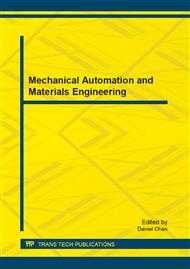p.754
p.760
p.765
p.771
p.775
p.780
p.785
p.790
p.794
Study on Attenuation Performance of Expanded Graphite at 8 mm Wave under Different Experiment Conditions
Abstract:
On the base of analyzing the attenuation mechanism of expanded graphite, the influence of expanding volume of expanded graphite prepared by inserting nitric acid and attenuation performance of expanded graphite at 8mm wave in different expanding temperature is studied. Attenuation performance of expanded graphite prepared in the lab and by smoke equipment is compared in the same surface density. The results show that the temperature is over 500°C when the worm-like graphite can weaken 8mm wave effectively. At 1100°C, it will be up to the maximum, 4.9dBm. It is proved that attenuation performance at 8mm wave of the expanded graphite prepared in the lab is the same as that by smoke equipment.
Info:
Periodical:
Pages:
775-779
Citation:
Online since:
August 2013
Authors:
Price:
Сopyright:
© 2013 Trans Tech Publications Ltd. All Rights Reserved
Share:
Citation:


